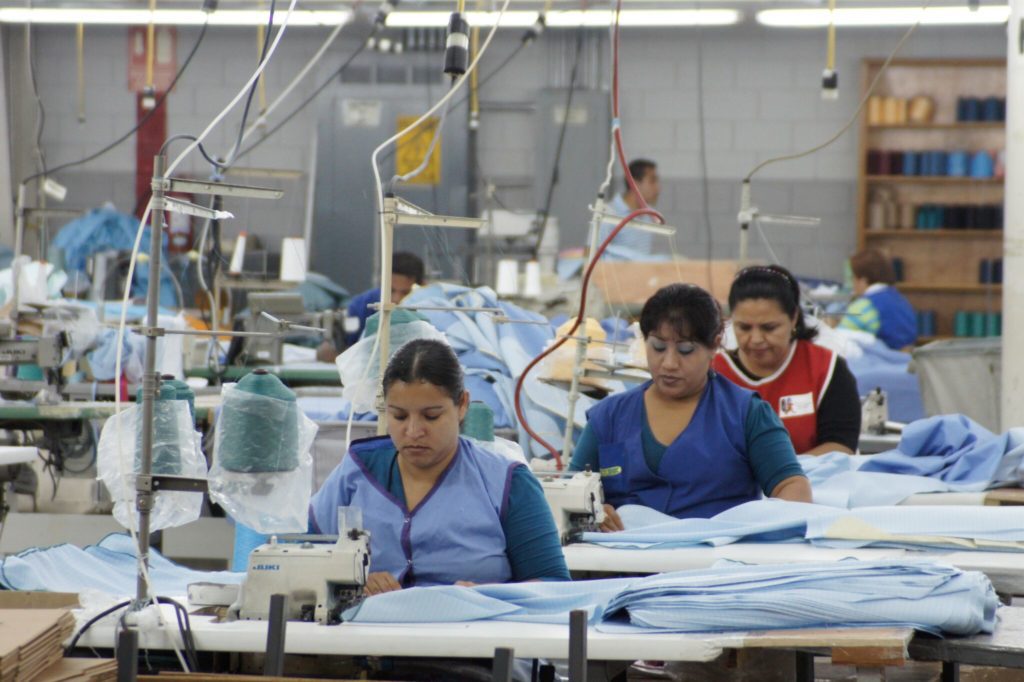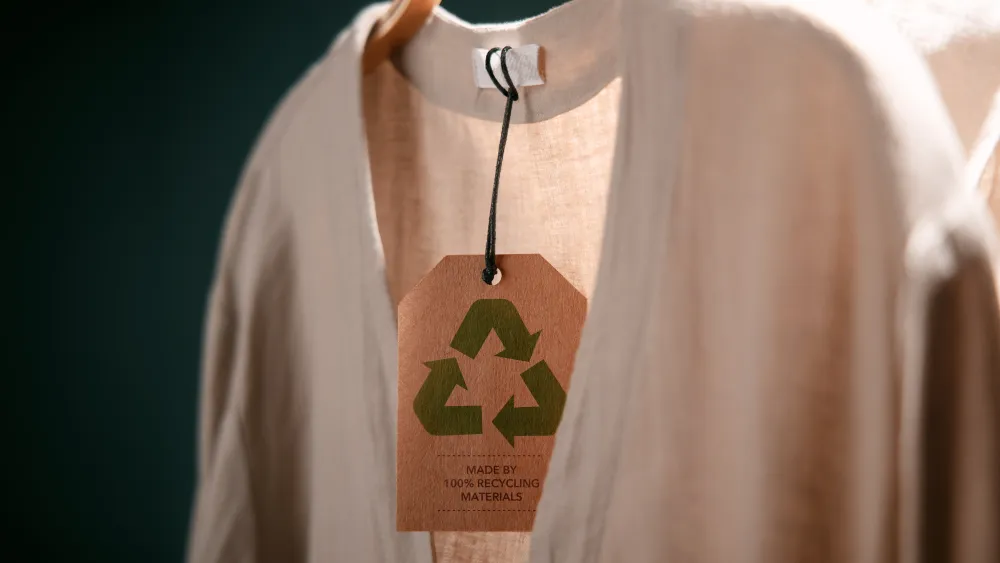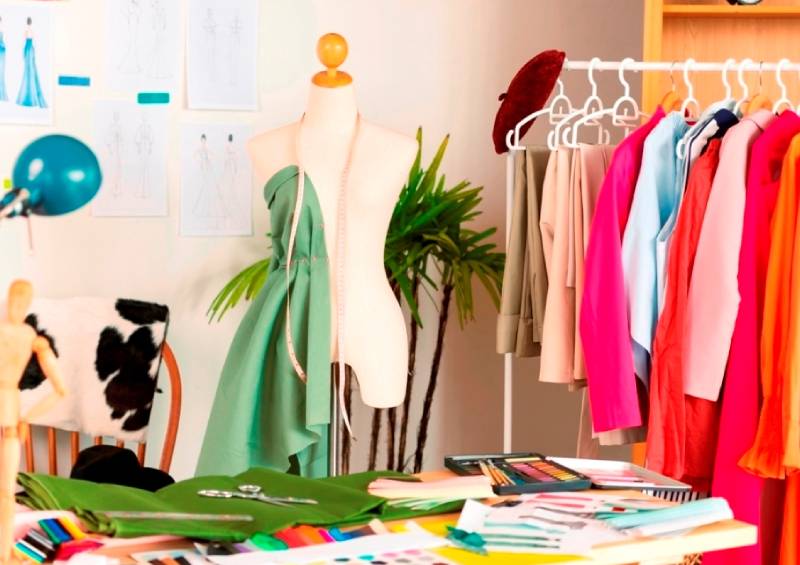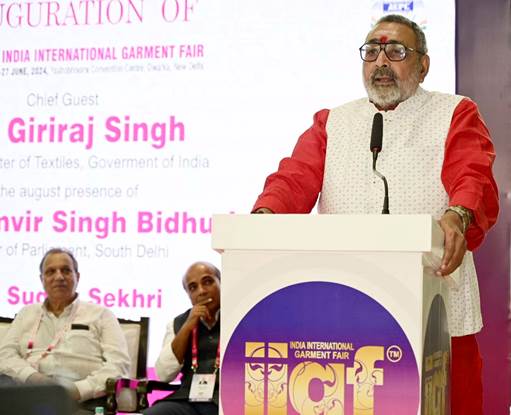FW
Spanish company Jeanologia would be showcasing its new technology ‘Dynamic Laser & Eco’ that uses laser and ozone during first stages of production, at the Denim by PV Barcelona to be held from May 21, 2014. The laser dynamic and G2 dynamic machines transfers sustainable technologies to continuous fabric, saving water, energy and chemicals.
Over 20 years of experience and the prestigious WGSN Global Fashion Award for best sustainable design team in the world, Jeanologia has positioned itself as a world leader in the development of sustainable technologies for garments finishing. Currently, the company is working on applying its know-how in garment finishing to the previous stages of the manufacturing process.
The new technology is designed to treat all types of fabrics, from heavy to light, with any structure. It, allows laser engraved on the continuous fabric garments besides aging effects by using ozone. The technology replaces the printing technique, to laser engraving, thus ensuring three-dimensionality.
The company will also display the G2 Dynamic technology that allows aging onto continuous fabric simply through the use of air, featuring different wear and tear on the fabric base with time passed by effect, which would not be reproducible by applying chemicals on conventional processes.
Denim by PV Barcelona, in its first edition, has chosen Jeanologia to create the vintage space area trends with its exhibition ‘Truth & Light’, illustrating the major advances that have been made with laser technology. The exhibition uses art, history and fashion to illustrate the major strides made in laser technology in recent years.
www.jeanologia.com
 A new report titled, 'The Fibre Year 2014' states that worldwide fibre demand in 2013 exceeded 90 million tons or 4.4 per cent more than 2012. The per capita use of textile materials for clothing, home textiles, carpets, and technical textiles was earmarked at 12.7 kg. Continuing its growth, chemical fibres increased 5.7 per cent to 54.4 million tons on the back of strong growth of polyester and polyamide, whereas the volume growth of cellulosic fibres amounted to 10.4 per cent or about 6 million tons.
A new report titled, 'The Fibre Year 2014' states that worldwide fibre demand in 2013 exceeded 90 million tons or 4.4 per cent more than 2012. The per capita use of textile materials for clothing, home textiles, carpets, and technical textiles was earmarked at 12.7 kg. Continuing its growth, chemical fibres increased 5.7 per cent to 54.4 million tons on the back of strong growth of polyester and polyamide, whereas the volume growth of cellulosic fibres amounted to 10.4 per cent or about 6 million tons.
On the other hand, cotton demand increased marginally by 0.9 per cent to 23.6 million
tons. For the first time, worldwide stocks went over the 20 million ton mark, covering 85 per cent of demand. Wool continued its growth in the fourth year with a growth of 1.2 per cent.
The annual textile survey points out that massive investment is creating overcapacities and enormous challenges which will have to be met by non-integrated enterprises, in China and elsewhere. Those hit in the first line will be interim products for Polyester (PES), Paraxylene (PX) and Terephtalasid (PTA). The overcapacities, according to the survey, will lead to uneconomical capacity ratios putting pressure on prices and influencing other fibre segments.
As per latest WTO figures the Chinese industry has been consolidating its lead in fiber capacity investments. Total Chinese fiber exports increased 11.4 per cent to $284 billion, resulting in a trade surplus of $257 billion in 2013. Turkey and Bangladesh too saw aggressive growth. Vietnam saw good growth rate of better than 18 per cent to $20 billion. The Vietnamese industry will be in the textile sector through the TTP Trans Pacific Partnership negotiations led by the US.
The Fibre Year 2014, a world survey on textiles and nonwovens reports actual development of all important natural and chemical fibres as well as raw materials and nonwovens and with projections up to 2017. In addition there are 20 country profiles of leading producing and consuming nations, giving a true worldwide picture of the latest development in the textile industry, along with a chapter with an outlook and projections beyond 2020.
The American version of Techtextil took place May 13 to 15, 2014, Georgia World Congress Center, Atlanta. It was held in conjunction with the second edition of Texprocess Americas and the composites show JEC Americas. The combined events brought together raw material, equipment and technology suppliers, and niche start-ups in a collaborative atmosphere benefitting the technical textiles, sewn products, and composites industries. The international show included pavilions from Belgium, Germany, Italy, Portugal, China, and France. The Supply Chain USA, area of Texprocess saw a 50 per cent increase in number of exhibitors.
The Techtextil, Texprocess, and JEC exhibitions provided an eye-opening look at the innovative ideas being generated by the textile and sewn products industries to meet the challenges of rapidly-changing consumer demands and business conditions. Industry-transforming technologies were on display at the Cool Zone pavilion. Robotic sewing machines, 3D body scanners, and cloud-based technologies are changing the way the industry manufactures, communicates, and interfaces with consumers.
While US government cutbacks have adversely affected military programs, US textile mills are finding additional business in technically-oriented markets such as active wear, team sports, uniforms, health and medical, safety apparel, and the growing area of energy and petrochemicals.
The next Techtextil North America will be held in Houston, Texas, June 2 to 4, 2015.
https://techtextil-northamerica-us.messefrankfurt.com/atlanta/.../about_te
The American version of Techtextil took place May 13 to 15, 2014, Georgia World Congress Center, Atlanta. It was held in conjunction with the second edition of Texprocess Americas and the composites show JEC Americas. The combined events brought together raw material, equipment and technology suppliers, and niche start-ups in a collaborative atmosphere benefitting the technical textiles, sewn products, and composites industries. The international show included pavilions from Belgium, Germany, Italy, Portugal, China, and France. The Supply Chain USA, area of Texprocess saw a 50 per cent increase in number of exhibitors.
The Techtextil, Texprocess, and JEC exhibitions provided an eye-opening look at the innovative ideas being generated by the textile and sewn products industries to meet the challenges of rapidly-changing consumer demands and business conditions. Industry-transforming technologies were on display at the Cool Zone pavilion. Robotic sewing machines, 3D body scanners, and cloud-based technologies are changing the way the industry manufactures, communicates, and interfaces with consumers.
While US government cutbacks have adversely affected military programs, US textile mills are finding additional business in technically-oriented markets such as active wear, team sports, uniforms, health and medical, safety apparel, and the growing area of energy and petrochemicals.
The next Techtextil North America will be held in Houston, Texas, June 2 to 4, 2015.
https://techtextil-northamerica-us.messefrankfurt.com/atlanta/.../about_te
During the last edition of Kingpins Amsterdam, Invista unveiled a summary of the results from its ‘Global Men’s Denim Study’. The study covered consumer insights from over 3,000 male participants in Germany, Italy, India, China, the US and Brazil. Designed for a better understanding of men’s purchase preferences related to denim, the study covered topics such as key attributes men look for in jeans, how satisfied they are with current offerings, and where they get information about jeans. Top line results showed that fit and comfort were the two most important attributes that men were seeking, yet 30 per cent of participants felt current jeans offerings did not fully meet their expectations.
In thermal comfort, over 80 per cent participants said they would be interested in jeans that would help them stay cool and dry in the summer or warm and dry in the winter. Less than 35 per cent participants felt current consumer selections addressed these needs. Out of a variety of commercial fabric brand names, the most preferred jeans concept for summer was the Coolmax brand, while the most preferred for the warm and dry concept was the Thermolite brand.
The study found today’s time starved consumers want garments that can simplify their lives, allow them to look good and feel comfortable under different circumstances. Offerings like Coolmax and Thermolite fabrics can help brands and retailers achieve this goal.
www.invista.com/en/index.html
This July's editions of Interfiliere and Mode City Paris will share a common entrance bringing the two shows closer together. Visitors will see expanded offerings for buyers across the value chain for intimates, home wear and beachwear sectors. Interfilière hopes to give visitors a good knowledge and assist communication between the different layers of segments, so buyers and designers can better understand and communicate their design and retail needs to knitters, lace makers, embroiderers etc.
In terms of visual inspiration for trends, the general forum will take the forum of an art gallery to complement the key art and literature inspired trends for color ways and textures for intimates and beachwear.
For Mode City the focus is on beachwear. With buyers now looking as far ahead as summer 2016, there is a wealth of inspiration. Having acquired the American Curvexpo New York and Los Angeles trade shows, Eurovet wants to bring Europe and North America closer, firstly by creating a focus on US and Canadian brands but also attracting and supporting buyers from North America with special events, conferences and made-to-measure activities for these. Mode City will be unveiling 60 new brands from around the world.
www.lingerie-swimwear-paris.com/en/
Germany-based Terrot, a leader of circular knitting machine manufacturing, has taken over the insolvent Pilotelli Macchine Tessili. Terrot is a leading force in the production of electronically and mechanically controlled circular knitting machines worldwide. Terrot makes single and double, plain and jacquard circular jersey knitting machinery.
Italian builder Pilotelli, which opened in 1983, is especially known for its expertise in single-jersey technology and well-established global reputation with strong markets in Turkey and South America. Pilotelli covers both single jersey and double jersey circular knitting machines. It delivers approximately 1,200 machines every year globally for producing knitted fabrics, thus addressing a variety of applications as per the need of the end user. The cylinder is the heart of a circular knitting machine. With this reality, Pilotelli Machine decided in 2004 to start its own production of cylinders for the machines.
The acquisition has come about in order to meet Terrot’s growth strategy. At the same time it opens up new vistas for Pilotelli to recover its business from financial struggles in recent years.
 China's dragon-size textile industry is valued at $870 billion (Rs 50,95,590 crores) and its exports are estimated at $280 billion (Rs 16,39,960 crores). In the next 10 to 15 years, prediction is that China will exit textile manufacturing business leaving a huge gap for countries like India to take advantage. The question is, whether India would be able to compete with rivals leveraging all its strengths while overcoming weaknesses?
China's dragon-size textile industry is valued at $870 billion (Rs 50,95,590 crores) and its exports are estimated at $280 billion (Rs 16,39,960 crores). In the next 10 to 15 years, prediction is that China will exit textile manufacturing business leaving a huge gap for countries like India to take advantage. The question is, whether India would be able to compete with rivals leveraging all its strengths while overcoming weaknesses?
China, the textile manufacturing giant is showing all signs of moving ahead and away from being a manufacturing hub. In 2012, China’s share in the global textile and apparel trade dropped to $280 billion (Rs 16,39,960 crores) from $300 billion (Rs 17,57,100 crores) in the previous year. In 2013, growth in different textile segments, including yarn, fabric and apparel was down compared to the previous year. With a change in its famous cotton stockpiling policy, the country has decided to lower its cotton imports and clear the piled up stocks.
On the other hand, factors such as a rise in domestic consumption, Yuan going against the export sector and rising labour costs, are leading to importing countries looking at other sourcing options. And China is gradually losing its competitive edge. A country, like Japan, has already moved to producing more sophisticated products which require skilled labour and has begun outsourcing some of its basic textile jobs to Indonesia and Vietnam.
India needs to take a lead
Indian textile industry has everything going for it required to replace China, as a leading manufacturing hub. It has a wholly integrated industry from cotton production to manufacturing of yarn, fabric and garment, with its expertise not restricted to just cotton, but extending to silk, wool and synthetic fabrics as well.
leading manufacturing hub. It has a wholly integrated industry from cotton production to manufacturing of yarn, fabric and garment, with its expertise not restricted to just cotton, but extending to silk, wool and synthetic fabrics as well.
Experts point out that first and foremost, the industry should be able to push its $40 billion (Rs 2,34,280 crores) textile exports to $280 billion (Rs 16,39,960 crores) in the next 10 to 15 years. Since the textile industry is labour-intensive, manufacturing tends to get outsourced from countries having cheaper labour. So the big opportunity is knocking at the door for India.
If one looks back into the history of textile industry, the fact that always remained evident is that production always shifted from high-cost countries to low-cost countries. By the late 1980s, production of most textiles in the industrially developed countries, such as the United States, Western Europe, and Japan, became too expensive to compete with imports due to rising wages and production costs. A large portion of fibre, yarn, cloth, and garment production were relocated to less-developed countries with lower wages. When China exits manufacturing like other developed countries, India will have to competitively make headways into the emptied space.
Removing growth hurdles
To make sure, that everything works in its favour, India must keep tab of the potential of its competitors. While Turkey has integrated industry like India its production costs rising closer to European Union standards. Countries like Bangladesh and Sri Lanka are strong but only in specific segments like garments. Bangladesh, of late has been facing compliance issues, which may work in favour of Indian factories. Pakistan, on the other hand, despite having a large textile sector and GSP+ status from EU, is grappling with issues like power, adequate infrastructure, modern machinery, technology and skilled manpower as well as political instability and internal security concerns.
China is the largest buyer of Indian cotton and cotton yarn but when it cuts down purchases to consume piled up stocks, India will have to develop capacities in the upstream segments to absorb the produce so that the cotton and yarn producers will not have to face the fall in demand. India’s economic climate has not been favourable for investments. India does not even figure among the first 100 countries in the ‘ease of doing business’ list. European countries like Italy, Belgium and France which could have otherwise invested in advanced technologies, have stayed away from India. China too has started outsourcing parts of its production to other countries like Vietnam and Indonesia, but India has not yet benefited from this move. Issue of lack of skilled labour force also is another big issue. India is also a power-deficient country and the demand-supply gap has been widening every year.
Industry has also been demanding a technology mission for cotton to address issues related to better quality seeds, mechanisation at farm level and better agronomy research to help bring down the cost of production. Also increased investments are needed and TUFS has to restore the rate of interest reimbursement for spinners under the scheme to 4 per cent from the current reduced rate of 2 per cent to boost development of new factories. When the demand for cotton and yarn from China comes down, India will have to increase its cotton fabric production capacities. Also, compared to the garment sector in Bangladesh, India’s industry is highly fragmented with smaller-sized units. All these hurdles have to be overcome, for the industry to race ahead in the competition.
Despite protests and several meetings by Punjab's textile mills to increase power supply by 135MW, the government of Pakistan was unable to fulfill demand. Punjab-based textile mills on independent feeders face 10 hours a day loadshedding. Over 55 mills across the state are dependent upon power but according to the industry sources, the government has done nothing to meet a meagre demand of 135MW.
Though mill owners have been paying their electricity bills on time, the exorbitant power tariff is making their lives difficult as demands for a special tariff for Punjab-based textile mills are not being taken into consideration by the National Tariff Commission. Meanwhile, the government is pursuing textile millers to invest on coal-based power generation with an upfront tariff of 9.25 cents. The textile industry is unhappy with the government for forcing them to invest in power generation, either in the shape of Captive Power Plants or coal-based generation. They feel it is the government’s responsibility to ensure uninterrupted energy supply.
The current crisis has been negatively affecting electricity-dependent mills and now they have started blaming the CPP-led mills to ignore their demand for energy. Also the Supreme Court verdict about equal distribution of electricity among consumers has also impacted the power-dependent mills. The cost of energy per unit for gas-based mills comes around Rs 6.5 against Rs 14 per unit for the electricity-dependent mills, which further brings to fore, the vast disparity between the two sides.
After Taiwanese investors, now Hong Kong investors in Vietnam have threatened to hold their expansion plans if authorities don’t take quick action in maintaining law and order against protesting workers against China. Businessman and lawmaker Felix Chung Kwok-pan has said that at least one investor has already taken steps in the direction. One Hong Kong businessman who has invested $300 million in Vietnam is holding his plans of injecting another $100 million for now.
About 3,000 Chinese nationals have already been evacuated from Vietnam, following deadly rioting sparked by anger over Chinese oil drilling in a disputed area of the South China Sea. The geographical tension erupted after China deputed a 1 billion dollars oil rig in a part of the South China Sea. It is the worst breakdown in ties between the two Communist neighbours since a short border war in 1979.
Many Hong Kong businesses started to open up factories in Vietnam owing to low wages in the countries. At present, a worker in Vietnam gets paid an average of $200 to $300 a month, compared to $600 to $700 dollars in China. Manufacturing and exports accounted for 75 per cent of Vietnam’s economy in 2012, up from 56 per cent in 2009. The bulk of this manufacturing was funded by foreign investment.












